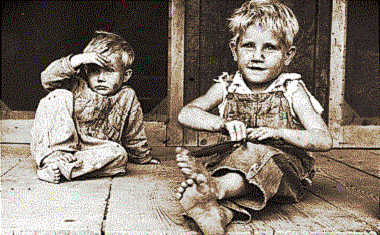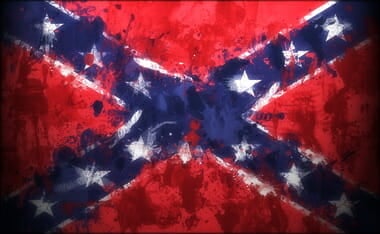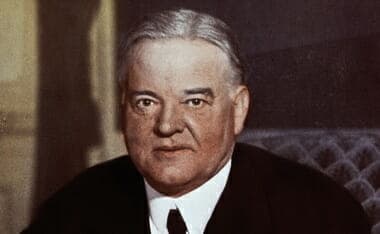Originally published on June 26, 2014
“For some, even catastrophe under Obama can be blamed on George Bush. After all, Franklin D. Roosevelt was elected to an unprecedented third term in 1940, after two terms in which the unemployment rate never fell below 10 percent and was above 20 percent for 21 consecutive months. FDR also inspired the will to believe— and he also had Herbert Hoover on whom to blame all the country’s troubles.”
— Thomas Sowell —
The video plays, the thumbnail [the picture that is suppose to show in the non-playing mode] does not work for some reason.
A new history of the Great Depression is emerging. One that acknowledges the role that government played in causing and prolonging it, and the constructive role that free enterprise could have played, if it were given the chance. In this video, UCLA economist Lee Ohanian explains how Herbert Hoover, widely misunderstood as a champion of the free market, actually turned what should have just been a recession into a depression due to his mistrust of the market.
Here is some more info via Thomas Sowell’s article, “Another Great Depression?“
…Let’s start at square one, with the stock market crash in October 1929. Was this what led to massive unemployment?
Official government statistics suggest otherwise. So do new statistics on unemployment by two current scholars, Richard Vedder and Lowell Gallaway, in their book “Out of Work.”
The Vedder and Gallaway statistics allow us to follow unemployment month by month. They put the unemployment rate at 5 percent in November 1929, a month after the stock market crash. It hit 9 percent in December— but then began a generally downward trend, subsiding to 6.3 percent in June 1930.
That was when the Smoot-Hawley tariffs were passed, against the advice of economists across the country, who warned of dire consequences.
Five months after the Smoot-Hawley tariffs, the unemployment rate hit double digits for the first time in the 1930s.
This was more than a year after the stock market crash. Moreover, the unemployment rate rose to even higher levels under both Presidents Herbert Hoover and Franklin D. Roosevelt, both of whom intervened in the economy on an unprecedented scale.
Before the Great Depression, it was not considered to be the business of the federal government to try to get the economy out of a depression. But the Smoot-Hawley tariff— designed to save American jobs by restricting imports— was one of Hoover’s interventions, followed by even bigger interventions by FDR.
The rise in unemployment after the stock market crash of 1929 was a blip on the screen compared to the soaring unemployment rates reached later, after a series of government interventions.
For nearly three consecutive years, beginning in February 1932, the unemployment rate never fell below 20 percent for any month before January 1935, when it fell to 19.3 percent, according to the Vedder and Gallaway statistics.
In other words, the evidence suggests that it was not the “problem” of the financial crisis in 1929 that caused massive unemployment but politicians’ attempted “solutions.” Is that the history that we seem to be ready to repeat?
The stock market crash, which has been blamed for the widespread suffering during the Great Depression of the 1930s, created no unemployment rate that was even half of what was created in the wake of the government interventions of Hoover and FDR….
From Zero Hedge,
“Governments are good at creating work, but they are not good at creating value-generating jobs,” is the conclusion from this insightful 3-minute clip from Professor Steve Horwitz. Too often the jobs that politicians ‘create’ are simply to their own benefit. Critically, Horwitz explains that transitions (from agriculture to manufacturing to service to information for instance) are temporarily painful but relatively quickly re-allocated. If, however, politicians attempt to prevent this transition – to stall the free market’s signals – this will halt innovation, growth, and create more poverty (ring any bells). Creating meaningful valuable jobs (something we saw earlier today is not occurring) does not appear too complex – “the best job-creation program in human history is the free market and the entrepreneurship it generates” – it simply means our politicians must get out of the way.
Elsewhere Sowell writes:
…In “FDR’s Folly,” author Jim Powell spells out just what the Roosevelt administration did and what consequences followed. It tried to raise farm prices by destroying vast amounts of produce — at a time when hunger was a serious problem in the United States. It imposed minimum wage rates that priced unskilled labor out of jobs, at a time of massive unemployment.
Behind both policies was the belief that what was needed was more purchasing power and that this could be achieved by government policies to raise the prices received by farmers and workers. But prices do not automatically translate into greater purchasing power, unless people buy as much at higher prices as they would at lower prices — which they seldom do.
Then there were the monetary authorities contracting the money supply in the midst of the biggest depression in history — when the economy was showing some signs of revival, until their monetary contraction touched off another big downturn.
With policy after policy and program after program, “FDR’s Folly” traces the high hopes and disastrous consequences. It would be funny, like the Keystone cops running into one another and falling down, except that millions of people were in economic desperation while this farce was being played out in Washington.
Perhaps worse than any specific policy under FDR was the atmosphere of uncertainty generated by incessant new experiments. Billions of dollars of investment were needed to create millions of jobs for the unemployed. But investors were reluctant to risk their money while the rules of the game were constantly being changed in Washington, amid strident anti-business rhetoric.
Some of the people who most admired and almost worshipped FDR — poor people and blacks, for example — were hurt the most by amateurish tinkering with the economy by Roosevelt’s New Deal administration…
Milton Friedman explodes the myth that the Great Depression was produced by a failure of private enterprise.
Uncommon Knowledge: The Great Depression with Amity Shlaes
Amity Shlaes challenges the received wisdom that the Great Depression occurred because capitalism broke and that it ended because FDR, and government in general, came to the rescue. According to Shlaes, it was the government that made the Great Depression worse. And was FDRs progressivism, as evident in the New Deal, really all that new, or was it a step along a progressive continuum that already had been established?



